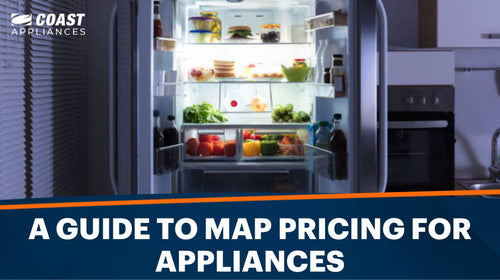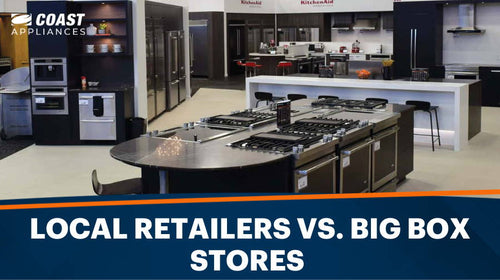Your refrigerator is where you store your food. Needless to say, it should be kept clean and functioning optimally. A poorly organized refrigerator may be working harder than it should, which can wear out the compressor too early. A well-organized refrigerator not only saves you from costly repairs but also makes meal preps less time-consuming. There are other benefits too. Making a grocery list feels like a breeze and there is less food wastage because you can see everything inside the fridge.
If you are one of those who end up duplicating what you already have in the fridge or struggle to find some snacks when you are craving them, then this guide can help. Fridge organization might seem like an all-day task, but with simple ideas and techniques, you can ace it. This minimal effort not only frees more space in the fridge but will also keep them fresh longer. Let’s put an end to your refrigerator organization woes with some killer ideas.
In this article, we’ll cover:
How to Organize a Fridge - Basics of Fridge Organization
If you are spending too much time organizing a meal because you end up wasting time searching for the ingredients in the fridge, these tips will come as a rescue. You don't need any expensive equipment or a long checklist to follow these tips. In fact, you can do it while reading this article.
Stack fruits and veggies at the front
What can be a healthier snack than a fresh apple or juicy grapes? However, healthy munching can turn into a nightmare if the fruit is dried up and hidden at the back of your shelf. Store these quickly perishable foods to the front so you can see them.
The easiest way to stock fruits and veggies is to organize them on the fridge door. Replace your condiments with fruits to eat healthily and also save on grocery shopping.
Arrange leftovers in the center
The middle shelf is the best place to store your leftovers, so they don't get lost and go bad. Leftovers are usually stored in containers and should be eaten within a few days to avoid wastage. When hidden by soda cans and other foods, your leftovers usually end up forgotten. The middle shelf is the first thing you will see when you open the door, so it is the perfect place to store leftovers.
Reserve the lowest shelf for meat and poultry
Do you know that certain places in your refrigerator are cooler than others? The lower and middle shelves are cooler than the top shelf. So, stocking up highly perishable foods like chicken, seafood, and meat on the lower shelf is always a good idea to keep them fresh a little longer. Also, raw meat can spill juice when it drips on other food and can spoil it. Keeping them on the lowest shelf prevents this and also makes cleaning easier.
To further simplify cleaning the lower shelf, you can store meat in Ziplock bags or containers. We recommend using fridge liners as they are breathable, soak up fluid, and make cleaning simple.
Keep condiments in the lower drawers
This might sound odd, but this is helpful in many ways. Ditch the condiment compartments on the door, and stock them up in lower drawers. This is because foods like dairy products, eggs, and spreads are not used daily for meals. This way, you can reach for condiments when you need them, and other foods won’t be hidden in the fridge. Dressings and condiments have a good shelf life so they don’t need to be visible.
Put drinks on the top shelf
Drinks come packed in bottles or cans so there are fewer chances of spills or cross-contamination with other foods. Besides, the top shelf is easily visible so you can reach for the drink whenever you want. Canned drinks can be easily stacked up in a small space, saving lots of space to store other foods.
10 Great Fridge Organization Ideas
Now that you are on your way to the kitchen, here is something that will bring your fridge organization to the next level. If you love to look at a beautifully organized refrigerator every day, here are 10 ideas to completely change the look of your refrigerator.
1. Invest in individual organizers to separate fruits and vegetables
You can get pull-out trays and drawers to organize fruits and veggies in the fridge. With these trays, veggies are not only easily accessible but also stay organized for a long time. They are transparent so you can see what’s inside instead of ransacking the whole fridge to find one tomato or apple.
2. Stack bottles or cans easily with a dispenser
You might not want to gulp a whole bottle of juice at once. So, attaching a dispenser saves effort and also keeps the fridge clean. You don't have to pull out the whole bottle or pitcher every time you want to take one or two sips. This can also cause spillage, causing cross-contamination. Dispensers come in handy and save you the time and effort of cleaning while serving you the exact amount of drink.
3. Consider labeling drawers and containers
Think of labeling as your friend. It is a one-time effort that will fast-track your meal prep throughout the week. It is natural to get confused when all leafy greens are stacked together. Labeling each of them will save the time of browsing through all the containers or zip bags to find what you want. Go ahead and label all similar-looking foods to easily distinguish them.
4. Line your shelves and drawers for easy cleanup
No matter how carefully you stack up, some foods will always spill and create a mess. Lining your fridge shelves is a good idea to avoid tiresome cleaning and also prevents cross-contamination. You can use fridge liners or refrigerator mats that are safe for food and saves you extra work.
5. Install rotating organizers to maximize access
Sometimes you might feel like stocking everything right in front because there are too many things that you need daily. Rotating organizers are a great way to solve the problem. You can stack up several items and simply rotate the organizer for easy access. Transparent rotating organizers will also not block your view of those items.
6. Mason jars have multiple uses and come in handy
These are lifesavers for safely storing pretty much anything prone to spill. You can use these aesthetically pleasing jars to store spreads, sauces, smoothies, juices, dips, pickles, and more. Discarding fragile store packaging for condiments and other items apart from cans is always a good idea. They can be damaged and contaminate other foods. Storing food in similar kinds of jars also presents a uniform look to an organized fridge.
7. Reusable storage bags for optimum use of space
This is immensely useful in small refrigerators where space is limited. As these storage bags are shapeless, you can stuff them with anything or stack them on shelves to maximize space. They are reusable so that saves a lot of money. Moreover, zip lock bags are transparent so you can see what's inside and use them when needed.
8. Multipurpose bins are stylish and useful
Stack snacks, fruits, veggies, and pretty much anything you want. Besides being highly stylish, these bins can make small spaces functional. You can also repurpose them to stock pantry items in the kitchen.
9. Get a space-saving wine holder
Wine bottles usually take up a lot of space in the fridge. This is where wine holders, specially designed for refrigerators, can help. With these holders, you can stack several bottles together in a small space and also add to the aesthetic feel of your organized refrigerator. These wine holders are also used for water bottles, soda bottles, or any other large bottle taking up too much space.
10. Get organizer bins for soda cans
Some soda cans are short and wide while others can be tall and slim. The difference in shape can make stacking them an impossible task. Keeping them on the shelf can significantly reduce space inside the refrigerator. This is where can-organizers become a feasible solution. You can stock different cans in one organizer to optimize space on the shelf.
Do’s & Don'ts for Fridge Organization
Despite all the tips and ideas, fridge organization can be tricky if you don’t know what to do. This Do’s and Don'ts section can be your go-to guide while organizing the fridge. You have complete freedom to unleash your creativity if you follow these tips.
DO put perishables at the front of the fridge so you see them
Foods with a short shelf life like meat, seafood, fruits, and vegetables need to be consumed when fresh. If these foods sit inside your fridge for too long, they will not only lose their nutritional value but can spoil, causing cross-contamination. If you stock them somewhere at the back of the shelf, you might forget them. So, keeping them in a visible place every time you open the fridge can prevent food waste, unnecessary expenses, and also a tedious cleaning session.
DON’T forget to regularly clean out your fridge
Remember, what is stocked in your refrigerator goes inside your body. So, keeping it clean is crucial to maintain your family’s good health. We recommend cleaning the shelves weekly to keep contamination at bay and save you a tedious monthly fridge-cleaning chore.
DO put snacks in easy-to-grab places
How many times have you ended up munching pretzels or chips instead of healthy snacking and regretted it later? Yes, we all have been there. Sometimes we cannot find the best snacks because they are stored out of sight, which tempts us to indulge in unhealthy snacks. To avoid this, store healthy snacks at the front and hide unhealthy ones.
DON'T leave items in the packaging
Although we discussed this earlier, this tip deserves a place in the don'ts section as well. Commercial packaging might look attractive but often wears out fast and is also not safe for foods in the long term. Remove the packaging of eggs, fruits, and yogurts and store them in clear containers. No one enjoys looking at cardboard and plastics when opening the fridge.
DO keep items in the same place from grocery trip to grocery trip
When you store the same food in the same place every week/month, it becomes easier to locate it. You will be so used to it that you can take out any veggie, fruit, or drink blindfolded from the fridge. Organizing your fridge after every grocery trip doesn't necessarily mean relocating everything.
FAQs About Fridge Organization
Here are a few questions that refrigerator owners or users often seek answers to. Check them out to find a solution to any problem related to fridge organization.
Why is fridge organization important?
Fridge organization helps optimize space utilization and also helps the refrigerator function better. Food stays fresh longer and also looks more appealing.
Where should eggs go in the fridge?
Eggs should be stored on the middle shelf to ensure they get consistent cooling. Any leftover egg white or yolk should be kept in an airtight container and stored in the middle or at least on the lower shelves.
Are fridge bins worth it?
Fridge bins are worth every penny you invest. They simplify food storage and also enable easy access to different foods in the fridge.
What should be stored in the bottom drawer of the fridge?
Any food that is likely to cause spillage is best stored in the bottom drawer. As nothing is below it, food cannot contaminate anything else with spills. Steaks, seafood, etc. are ideal for storing on the bottom shelf/drawer.
Where do meat and cheese go in the fridge?
Meats tend to leak juice that can cause cross-contamination. Cheese has a short shelf life so it needs to be kept on the coldest shelf in the fridge. We recommend storing meat and cheese on the bottom shelf to avoid contamination, tiresome clearing, and quick spoilage.
Where do you put milk in the fridge?
Milk is highly perishable so store it in the middle or lower shelves where cooling is highest. Store milk in a pitcher and try to consume it as soon as you can.
What goes in each fridge drawer?
Drawers are designed to optimize storage and provide easy accessibility to foods. Store food in the drawer that you need daily or frequently, which can be fruit, vegetables, etc.
What goes on each fridge shelf?
The top shelf should be reserved for foods that are well-packed, have a longer shelf life, and are less likely to cause spillage or cross-contamination. All perishable foods and leftovers should be kept on the middle shelf. Foods with a shorter shelf life cause spillage and cross-contamination and should be stored on the bottom shelf.
Conclusion
Fridge organization will not only ensure the proper functioning of the refrigerator but will also improve your family’s health. If you are tired of fighting for space in your fridge and want to upgrade to a modern refrigerator that comes with a host of advanced features and enough room to stock up on groceries for a couple of weeks, then Coast Appliances is the right place to start your search. You can choose different models based on features, design, style, and also your budget.














